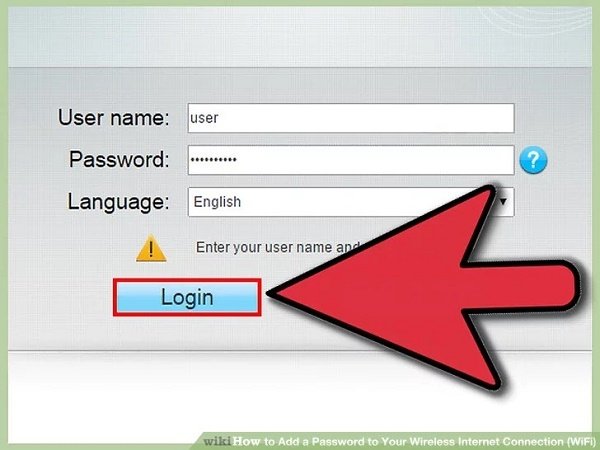A Home Wireless Network Makes Things Easy, But If You Don’t Choose A Good Password, You Expose Yourself To Malicious Attacks As Well As Access To Neighbors.
Choosing a password is quick and easy and can be very helpful in the future. By reading this article, you can set a strong password for your WiFi network in a few minutes.
1. Access the wireless router

It is usually instrumental in doing this through the disk that came with the router. But routers are designed to be connected to them remotely and over the Internet. To access the router through the browser, enter one of the addresses 192.168.1.1, 192.168.0.1, or 192.168.2.1 in the browser’s address bar.
– If you can access the router through a computer connected to it by a network cable. If you connect to the modem via WiFi, you will be disconnected from the network when the settings change. You will need to reconnect to the network and return to where you were before.
– The default username and password for most routers is “admin.”
If you fail, login, leave one of the fields blank, and type admin in the other field. And If you still do not succeed, contact your router support.
If you have changed the router password before but do not remember it now, hold down the Reset button for a few moments to return to the factory default settings.
Then If you do not have access to the router‘s leading guide, search the Internet for its model to find the default IP address and login details.
2. Find the wireless security settings
The label for this part usually varies on different routers. But it is generally in Wireless Settings or Security Settings. If you have trouble finding it, search the router model number on the Internet and discover how to access the router security settings.
3- Specify the type of encryption
Most routers offer several security options. You can usually choose between WEP, WPA-PSK (Personal), or WPA2-PSK. You can select WPA2 because it is the most secure type of encryption for wireless networks. Some older routers do not have this option.
Some older devices will not connect to networks that use WAP2. If you have several older devices that you want to connect to the network, be sure to keep this in mind.
4. Select AES algorithms for WPA2-Personal
If you choose, use AES as the encryption algorithm for WPA2 security mode. Some routers only give you the option to select AES. Another option is TKIP, which is both older and less secure.
AES means advanced encryption standards and is the best algorithm for wireless encryption.
5. Enter the password and SSID
SSID is the network’s name and must enter the password for each device to connect to the SSID.
The password should be a combination of letters, numbers, and symbols. The simpler the password, the easier it will be for others to access the network. You can use online password generators to generate the best and strongest passwords for your wireless network.
6. Save the new settings and refresh the router
Click Apply or Save on the wireless settings page to save any changes you make. Many routers refresh automatically, and any device connected to the device wirelessly is disconnected from the network and must be re-signed.
To refresh the power router, turn it off and count to 10. Then turn it on again and allow the boot cycle to complete. If your router does not refresh automatically, you must do so manually.
Be sure to enter the new login and password settings on all devices permanently connected to the wireless network. Then to increase WiFi security, it is recommended that you change the router password every six months.